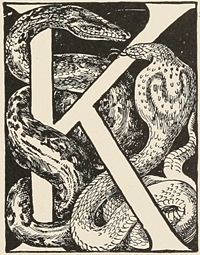
Photo from wikipedia
Background Motor imagery (MI) has been a widely used strategy in the past two decades to enhance physical capabilities among orthopaedic patients. However, its effectiveness is still questioned, since the… Click to show full abstract
Background Motor imagery (MI) has been a widely used strategy in the past two decades to enhance physical capabilities among orthopaedic patients. However, its effectiveness is still questioned, since the demonstrated effects were likely task-dependent, with little evidence of transfer to tasks not specifically trained with MI. Objective The aim of this study was to investigate whether an MI practice focused on maximal isometric knee extension strength, causes additional specific and general adaptations upon neuromuscular and functional variables when compared to conventional rehabilitation only, in patients submitted to total knee arthroplasty (TKA). Design Parallel group randomized controlled clinical trial. Participants Thirty-four patients (56% man) submitted to TKA. Program Patients were randomly assigned to an MI practice group (MIp: 15 minutes per day/5 days per week in addition to routine physical therapy) or control group (CON) that performed routine physical therapy alone for four weeks. Outcome measures The maximal isometric knee extension strength of the operated leg was defined as the primary outcome. Secondary outcomes were spatial and temporal gait parameters, 30-second chair sit-to-stand performance, a self-reported physical function assessed by the Lower Extremity Functional Scale (LEFS) questionnaire, and an MI ability score. All measurements were conducted before and one month after TKA. Results Significant differences in treatment effects were observed for the MIp group compared to CON: the MIp showed less strength decrease (ES = 1.15, 95% CI: 0.32, 1.99, p = 0.022); faster self-selected speed under single (ES = 2.12, 95% CI: 1.16, 3.08, p = 0.001) and dual task (ES = 1.59, large, 95% CI: 0.67, 2.50, p = 0.002) conditions; brisk-pace gait speed during single (ES = 1.32, 95% CI: 0.47, 2.17, p = 0.020) and dual task conditions (ES = 1.31, large, 95% CI: 0.38, 2.23, p = 0.013); improved chair sit-to-stand (ES = 1.45, large, 95% CI: 0.58, 2.31, p = 0.004) performance; and a higher score on MI ability questionnaires for kinaesthetic imagery (KI) (ES = 0.55, 95% CI: -0.23, 1.34, p = 0.010) and internal visual imagery (EVI) (ES = 0.99, 95% CI: 0.18, 1.80, p = 0.039) scales, respectively. In addition, only MIp showed unaltered single and double support periods, as well as stride length and cadence during single task self-selected gait condition. Finally, analysis showed that the improved MI ability score achieved at the end of MI training was significantly correlated with the changes in the strength of the operated leg (kinaesthetic imagery: r = 0.741, p = 0.004; and internal visual imagery: r = 0.623, p = 0.023). Conclusions MI training, when added in a corollary to routine physical therapy, led to improvements in both specific and general adaptations that were related to patients’ physical capabilities. While future studies must also evaluate the long-term effects, conducting MI training during acute and post-acute rehabilitation phases is advised, especially when the extent and range of physical exercise is limited or made impossible. Trial registration ClinicalTrials.gov NCT03684148.
Journal Title: PLoS ONE
Year Published: 2019
Link to full text (if available)
Share on Social Media: Sign Up to like & get
recommendations!